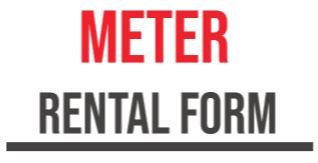Standard FF / FL Specification
| A. | Random Traffic Floor & Slab Designation | Any floor area that is not part of the Defined Traffic Floor is part of the Random Traffic Floor. Any floor slab that is part of the Random Traffic Floor is a Random Traffic Slab. |
| B. | Only Areas to Which Specified F-Number Tolerances Apply | The Overall Values (OAFF- and OAFL-) specified herein shall apply only to the entire project floor when completed and to no sub-division thereof. The Minimum Local Values (MLFF- and MLFL-) specified herein shall apply only to the rectangular Minimum Local Test Areas bounded either by the building’s column and half-column lines, or to the rectangular Minimum Local Test Areas bounded by the slab’s construction and saw cut control joints, whichever are the smaller rectangles. |
| C. | Local Flatness/Levelness of Slabs-on-Grade | The slab-on-grade Random Traffic Floor shall conform to the following minimum F‑number requirements: Specified overall values : OAFF‑ ( G ) / OAFL‑ ( 3G / 5 ) Minimum local values : MLFF‑ ( 3G / 5 ) / MLFL‑ ( 9G /25) |
| D. | Local Flatness/Levelness of Elevated Slabs | Except as set forth in Paragraph F below, the elevated Random Traffic Floor(s) shall conform to the following minimum F‑number requirements: Specified overall values : OAFF‑ ( E ) / OAFL‑ ( 3E / 5 ) Minimum local values : MLFF‑ ( 3E / 5 ) / MLFL‑ ( 9E / 25 ) |
| E. | General Conformity to Design Grade | Except as set forth in Paragraph F below, both the on-grade and elevated Random Traffic Floors shall fall within a 1½” deep horizontal envelope centered on their specified elevations. |
| F. | Exceptions | The OAFL, MLFL, and grade conformity tolerances set forth in Paragraphs C, D, and E above shall not apply to any Random Traffic Slab that is to be inclined or cambered. The OAFL and MLFL tolerances set forth in Paragraphs C and D above shall not apply to any un-shored elevated slab construction. The general conformity to design grade tolerance set forth in Paragraph E above shall apply to un-shored elevated slab constructions, but in all such cases, the horizontal envelope depth shall be increased to 2½”. |
| G. | Testing | All floor flatness, levelness, and grade conformity tests shall be made (at the Owner’s expense) on each newly installed Random Traffic Slab within 8 hours following completion of the final troweling operation. All flatness and levelness tests shall be made in accordance with the latest revision of ASTM E1155. Exception: The 320 ft2 minimum test section area requirement given in paragraph 7.2.1 shall not apply. If the FF and FL values exhibited by each of the survey lines comprising the initial test of a new Test Section meet or exceed both the specified MLFF and the specified MLFL, respectively, then that new Test Section shall be deemed “acceptable” for MLFF and MLFL compliance. If the FF and FL values exhibited by one or more of the survey lines comprising the initial test of a new Test Section fail to meet or exceed both the specified MLFF and the specified MLFL, then that new Test Section shall be deemed “questionable” for MLFF and MLFL compliance. All “questionable” Test Sections shall then be divided into Minimum Local Test Areas per Paragraph B above. Each Minimum Local Test Area crossed by a survey line that exhibited a sub-MLFF and/or sub-MLFL result shall then be tested individually for MLFF and MLFL compliance. Grade conformity shall be tested either by measuring point elevations at 5-ft intervals in both directions (i.e. on a 5-ft grid) using an optical or laser level, or by translating the FE overall elevation envelope results reported by the F-Meter or D-Meter. The technician making the floor profile tests shall hold a “Certified F-Number Technician Certificate” issued by Allen Face & Company LLC within the last 10 years. |
For a complete copy of the specification, please download the PDF file above. | ||





